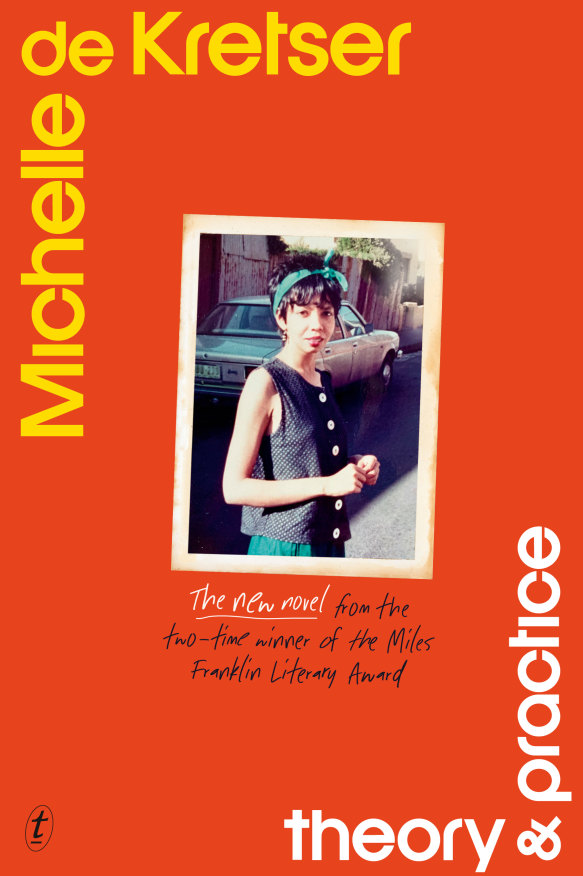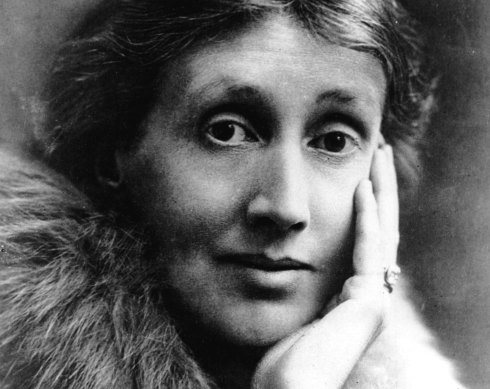
“I will not be ‘famous,’ ‘great,’ wrote Virginia Woolf in her diary of 1933; “I will go on adventuring, changing, opening my mind and my eyes, refusing to be stamped and stereotyped. The thing is to free one’s self: to let it find its dimensions, not be impeded.”
These words could be emblazoned above the desk of the writer Michelle de Kretser, who has been adventuring and changing over eight novels – two of them winners of the Miles Franklin Award – since her debut with The Rose Grower in 1999.
They are also a mantra for the narrator of her latest novel, Theory & Practice, about a young woman in mid-1980s Melbourne embarking on an MA thesis about Woolf. She is hoping to become an author and “write a novel that doesn’t read like a novel”. A very Woolfian sentiment and a very de Kretserian one.
“I’m not the narrator, but I give her some of my ideas and ambitions,” admits De Kretser, who has indeed written a novel that only reads like one in parts and who also did postgraduate research in the ’80s, a time when French post-structuralist theory, with its deconstruction of texts and questioning of cultural assumptions, dominated discourse.
We’re talking via Zoom, De Kretser from a study crammed with books and files. Not her own, it turns out, but that of her partner, the poet and translator Chris Andrews. “Mine gets too sunny in the afternoon,” she explains. Rooms of one’s own are another of Woolf’s themes, specifically their importance in allowing women the space to take themselves seriously.
Woolf is threaded through De Kretser’s work; the English modernist novelist and essayist looms large, both as the provider of a structure for her latest novel and as a model for how to write and, in some notable instances, how not to think.
The shape of Theory & Practice, explains De Kretser, is based on Woolf’s initial plan for her 1937 novel The Years. It was originally intended as a work that combined fiction with essays on contemporary social themes. But Woolf got cold feet and abandoned the idea, instead producing a straightforward novel that became a bestseller, outstripping her more experimental works of fiction, including To the Lighthouse and The Waves.

De Kretser has kept hold of Woolf’s original experimental idea; Theory & Practice is studded with passages of memoir and essays and begins with one fictional narrative before boldly veering off on a totally different one.
Did she ever get cold feet? “Not at all!”
Quite the reverse, she says; she knew she was onto something exciting and fresh. “With this one, I felt exhilarated. I’ve never felt as happy when I’ve finished a book,” she says, before qualifying her enthusiasm: “I don’t know if ‘happy’ is the right word. I just felt I’d made something different, and I would like the reader to feel ‘I have never read anything like this before’.”
She also feels happy about changing publishing houses for this novel. It’s her third publishing house; her first two novels, The Rose Grower and The Hamilton Case, were published by Random House, but she moved to Allen & Unwin with publishing director Jane Palfreyman, her then editor.
For Theory & Practice she signed with Melbourne firm Text Publishing, a change she says stemmed from a clash of values with Palfreyman. She’s unwilling to say more, except that she wanted to be with an independent Australian publisher. “I’ve known him a long time,” she says of Text’s publisher, Michael Heyward. “I enjoy talking about books with him and he’s very calm to work with.”
Woolf the feminist was a pin-up to De Kretser’s generation, and the narrator of Theory & Practice keeps a poster of the writer pinned to her St Kilda bedsit’s wall. But at one point it falls off. It is her fall, or failings, that interest De Kretser as much as her inspirational role?
“The 1970s and ’80s saw the canonisation of Woolf and that was when I was going through university. Nothing negative about her could be said at all, nothing about the casual racism, antisemitism, her snobbishness,” she says.
She famously referred to her husband Leonard Woolf as “the Jew” and referred to non-Caucasians in withering terms. In a passage in her diary of 1917, she refers to an encounter with the barrister E.W. Perera, a hero of Sri Lanka’s anti-colonial struggle, as a “poor little mahogany-coloured wretch”.

Virginia Woolf was a great writer, but not of beach reads.Credit: AP
De Kretser, who came with her family from Sri Lanka at the age of 14 in 1972, has written extensively of the experiences of men and women whose lives have been shaped by colonising forces and attitudes, whose complex and unique identities are stripped of nuance by other, more dominant voices.
While her passions can run very warm when it comes to human rights violations and the injustices of the world, her writing voice is always cool and poised. And when it comes to Virginia Woolf and her racism, she advocates balance.
She did want to draw attention to Woolf’s racism in the Perera passage, she says, but “without wishing to end up in an ‘oh I’m cancelling Virginia Woolf’ position, because I’m not interested in that. She’s an inspiration as well, she is someone who opened up the possibility of writing in a certain way.”
She is keen to point out that, alongside Woolf, there are many other themes and influences in the novel. One is the film My Life Without Steve, by Gillian Leahy, released in 1986, the year the main narrative opens. It charts the obsessive thoughts of a woman dumped by her lover and features in Theory & Practice.
“I thought ‘wouldn’t it be interesting to create a fiction around jealousy and how that relates to theory and practice?’ Specifically, feminist ideals and how hard they are in practice. The narrator is flailing about in the gap between the two.”
Loading
The reader may also occasionally flail, but that is her intention. Allusiveness and unexpected juxtapositions abound.
At one point in our conversation, she mentions the American writer Ursula Le Guin’s carrier bag theory of fiction, which posits that you can apply a hunter-gatherer analogy to writing. Male “hunter” narratives feature quests and heroes whereas gatherers, who provided most of the sustenance, are mainly women.
Gatherer styles of fiction, says De Kretser, are about a disparate collection of items being gathered and placed together in a bag. Alongside roots and edible leaves, she says, “there could be some flowers for pleasure. And just by being in this carrier bag they become entangled. It seemed to me that this could apply to forms, that you could have memoir, fiction, essays, all held together within the space of a novel.”
Theory & Practice is that space, she says, one that lets the reader do the lifting. “It’s very liberating,” she says. “The space creates a call and response. It’s essentially a book about the acts of reading and of writing.”
The Booklist is a weekly newsletter for book lovers from Jason Steger. Get it delivered every Friday.









 Add Category
Add Category